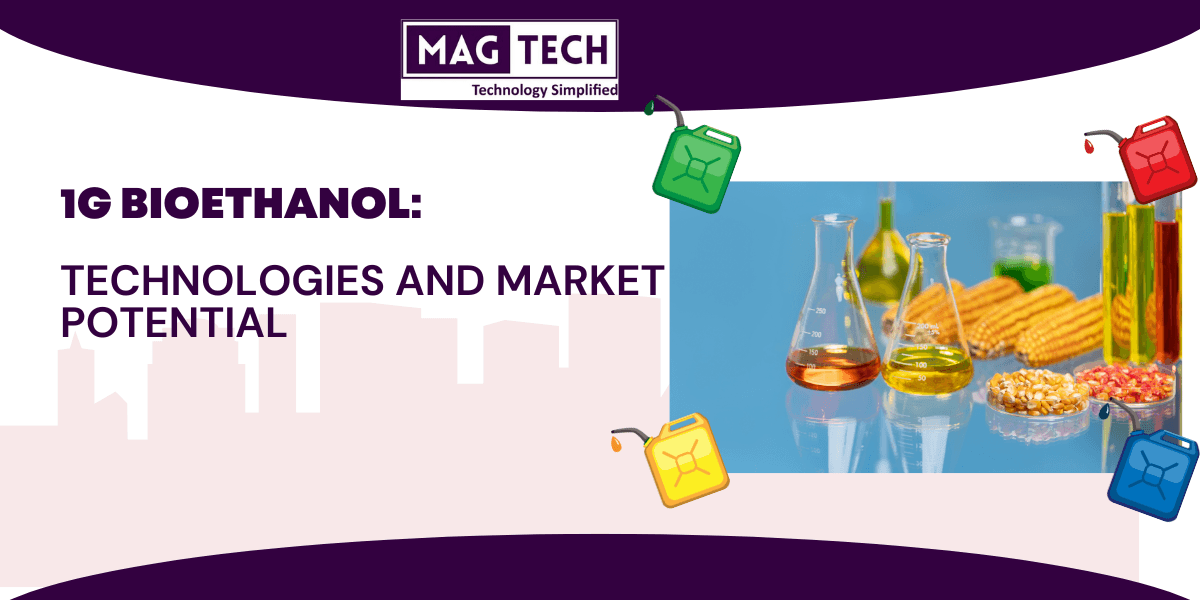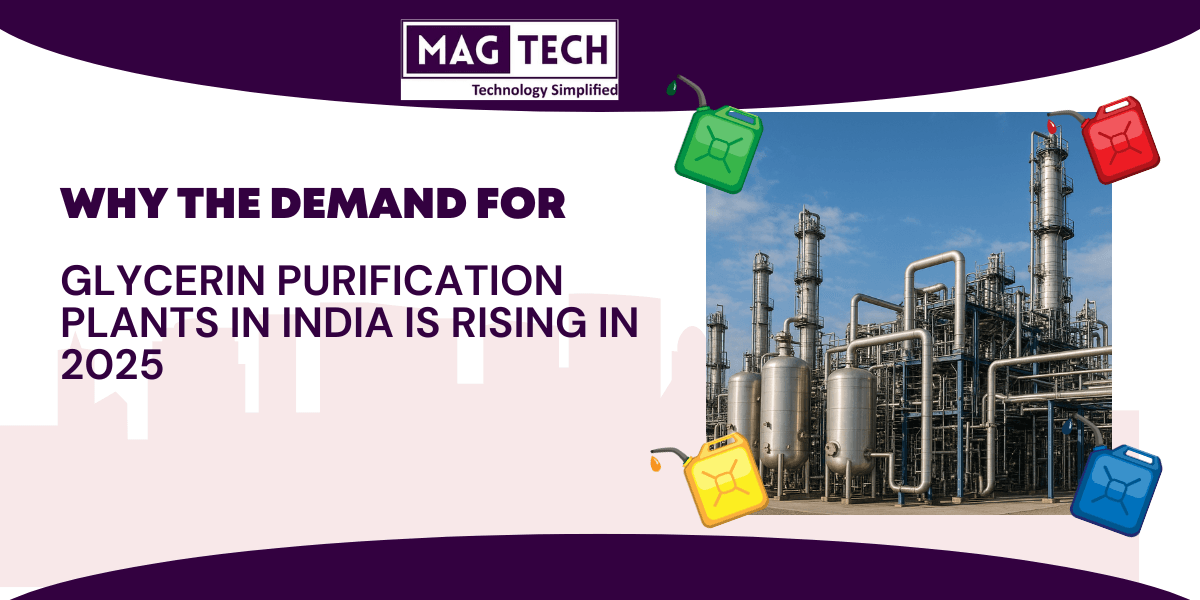In recent years, switching to sustainable alternatives in energy consumption has gained ground, and biodiesel surfaces as a prominent player in this domain. Comprehending the biodiesel production process takes us through an exceptional blend of sophisticated chemistry, engineering, and environmental science.
Each step in a biodiesel plant indicates the practical application of green technology, from the procurement of organic feedstocks to the intricate biochemical reactions and quality controls. In addition to the technological dimensions, the process sheds light on its significant global implications. This includes energy security enhancement, fossil fuel dependence reduction, rural development support, and climate change mitigation.
The Main Components of a Biodiesel Production Plant
The key components of a biodiesel plant are crucial for turning organic raw materials into usable biodiesel fuel through a series of chemical reactions and processes. Each component plays a specific role in ensuring the efficiency, safety, and quality of biodiesel production. Let us take a detailed look at these essential components –
- Feedstock Storage Tanks
Feedstock storage tanks are crucial for the initial stage of biodiesel production. These tanks are engineered to store various types of oils or fats, such as soybean oil, canola oil, or animal fats (the primary raw materials for biodiesel).
The integrity of these tanks is important to prevent contamination, chemical degradation, or microbial growth in the feedstock. They are typically made from materials resistant to the corrosive nature of fats and oils, such as stainless steel or coated carbon steel.
- Features may include
1. Temperature control systems such as external heating coils or internal heating elements to maintain oil fluidity, especially in colder climates where temperatures can cause the feedstock to solidify.
2. Agitation systems that ensure the feedstock remains mixed uniformly, preventing
separation or settling of components which can affect processing efficiency.
- Pre-treatment System
The pre-treatment system in a biodiesel plant works to condition the feedstock for conversion into biodiesel.
This involves removing unwanted contaminants such as water, dirt, metals, and phospholipids which can interfere with the transesterification process. The main components include –
1. Degumming units to remove phospholipids and other soluble impurities.
2. Bleaching tanks that use absorbent clays to remove color and minor impurities.
3. Dewatering units that apply heat and vacuum to remove moisture, which is crucial since water can lead to soap formation during the reaction process.
- Transesterification Reactor
The transesterification reactor is the central unit where biodiesel is produced. In this reactor, triglycerides found in fats and oils undergo a chemical reaction with an alcohol (usually methanol) in the presence of a catalyst, which can be a base (like sodium or potassium hydroxide) or an acid. The fundamental elements include –
1. The use of either a continuous flow stirred-tank reactor or a batch reactor, chosen based
on the facility’s scale and required output.
2. Catalyst injection systems designed to accurately deliver catalysts, ensuring efficient
reaction processes.
3. Temperature control systems that sustain the ideal reaction temperature, usually around
60°C, are crucial for achieving high conversion rates.
- Settlers and Separators
Following the transesterification process, the mixture contains biodiesel, glycerol, excess
methanol, catalyst, and additional by-products. The settlers and separators are engineered to
effectively separate these constituents –
1. Gravity settlers utilize the force of gravity, enabling the heavier glycerol to settle at the bottom,
while the lighter biodiesel stays on top.
2. On the other hand, centrifuges employ high rotational speeds to improve the separation process,
efficiently managing larger quantities and achieving purer separation more quickly.
- Methanol Recovery System
Methanol is typically extracted from both the biodiesel and glycerol phases through distillation, a
process crucial for both economic and environmental benefits. It lowers production costs and cuts
down on waste.
The system usually includes distillation columns engineered to focus on the specific boiling points
of methanol, enabling its separation and recycling within the system.
Condensers are used to transform methanol vapors back into a liquid state, which is then reused in
the transesterification process.
- Washing System
The washing system improves the quality of biodiesel by eliminating leftover catalysts, soaps
formed during saponification, and additional contaminants.
Water washing setups spray or blend hot water with the biodiesel, then use settling or
centrifugation techniques to remove the wash water along with the dissolved impurities.
Similarly, dry wash systems allow biodiesel to flow through towers filled with substances like ion
exchange resins or magnesium silicate, which attract and hold impurities, thus eliminating the
need for water.
Recovering and purifying glycerol adds value by turning a by-product into a marketable commodity. The process involves –
1. Concentration via evaporation to remove excess water.
2. Multi-stage distillation processes to refine glycerol to technical or pharmaceutical grade,
depending on market demands. Read more…
- Quality Control Laboratory
Quality control is critical to ensure that produced biodiesel meets regional and international
standards. Comprehensive testing and monitoring involve –
1. Performance testing by using gas chromatography to analyze fatty acid methyl ester(FAME) content and ensuring compliance with standards such as ASTM D6751 or EN14214.
2 . Purity testing by assessing levels of impurities like glycerin, metals, and sulfur.
3. Stability testing by measuring oxidation stability to predict biodiesel shelf-life.
Here, the biodiesel is stored in tanks and then distributed for use. Its storage containers and pipelines are typically made of materials that resist corrosion by biodiesel (e.g., coated steel, aluminum).
By converting oils and fats into biodiesel, this process not only provides a renewable alternative to fossil diesel but also helps in reducing greenhouse gas emissions and the dependency on finite petroleum resources.
- Typical Challenges Encountered in Biodiesel Production
Challenges in biodiesel production can be broadly categorized into several areas, each affecting the feasibility, efficiency, and environmental impact of biodiesel as a sustainable fuel option.
Addressing these challenges is crucial for scaling up production and increasing the adoption of biodiesel worldwide.
- Feedstock Availability and Cost
The quality and type of feedstock significantly influence the production process and quality of biodiesel. Common feedstocks include vegetable oils, animal fats, and recycled greases, and their varying fatty acid compositions require adjustments in processing conditions.
Some primary feedstocks for biodiesel, like soybean oil and palm oil, are also major food commodities. Their use in biodiesel production can lead to competition with food supplies, raising ethical and economic concerns.
The price of feedstocks also constitutes a substantial portion of the overall production cost of biodiesel. Fluctuations in feedstock prices can make the economics of biodiesel production highly variable.
- Technological and Chemical Challenges
The conventional transesterification method employs catalysts such as sodium or potassium hydroxide. However, the effectiveness of these catalysts can be compromised by free fatty acids and water in the raw materials, which may lead to the formation of soap and reduced process efficiency.
Attaining high yields and the ability to scale up are significant challenges in biodiesel production, particularly when fine-tuning reaction conditions and processing durations to achieve optimal efficiency.
- Energy Consumption and Efficiency
Biodiesel production, particularly the transesterification and purification stages, can be energy-intensive. This not only increases production costs but also impacts the overall energy balance and environmental footprint of biodiesel.
- Environmental Compliance and Emission Control
Production facilities release a range of pollutants, such as volatile organic compounds (VOCs) and sulfur compounds. Managing these emissions and adhering to environmental standards can increase both the complexity and the expense of operations.
Furthermore, the production process results in wastewater that includes impurities like glycerol, methanol, and salts. It is crucial to treat this wastewater prior to its discharge to avoid environmental contamination.
- By-product Management
Biodiesel production results in a significant amount of glycerol as a by-product. The oversupply of glycerol in the market can reduce its economic value, making its disposal or profitable use a challenge for biodiesel producers.
- Policy and Regulatory Issues
The development and uptake of biodiesel are significantly shaped by government policies such as subsidies, mandates, and incentives. Fluctuations or shifts in these policies can affect the stability and expansion of the biodiesel sector.
Achieving the necessary fuel quality standards and acquiring the appropriate certifications for biodiesel can be both complex and costly, influencing market entry and consumer confidence.
- Market Development and Public Perception
Despite its environmental benefits, biodiesel must compete with other renewable energy sources and fossil fuels. Public perception, influenced by concerns over feedstock sources and fuel efficiency, can impact the market acceptance of biodiesel.
Underlining the Bottom Line The functioning of a biodiesel production plant shows how innovation can lead to practical and sustainable energy solutions. This process isn’t just about fuel, rather, it’s about smart eco-friendly practices that pave the way for a greener future.
As mankind inclines towards more sustainable practices, these plants are crucial in our shift
towards a cleaner planet.
Contact us for an expert consult


